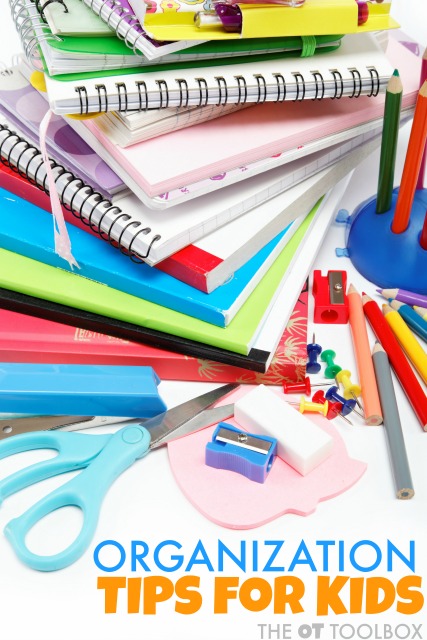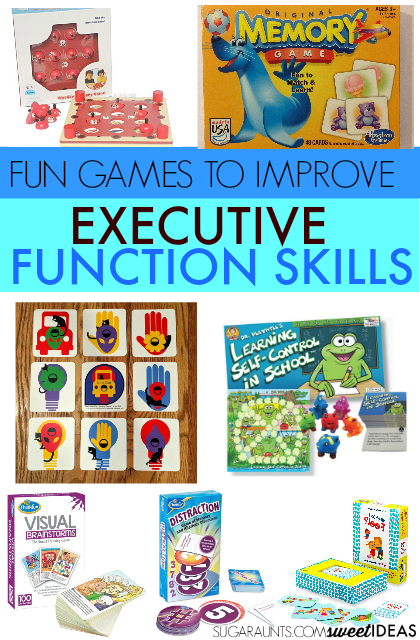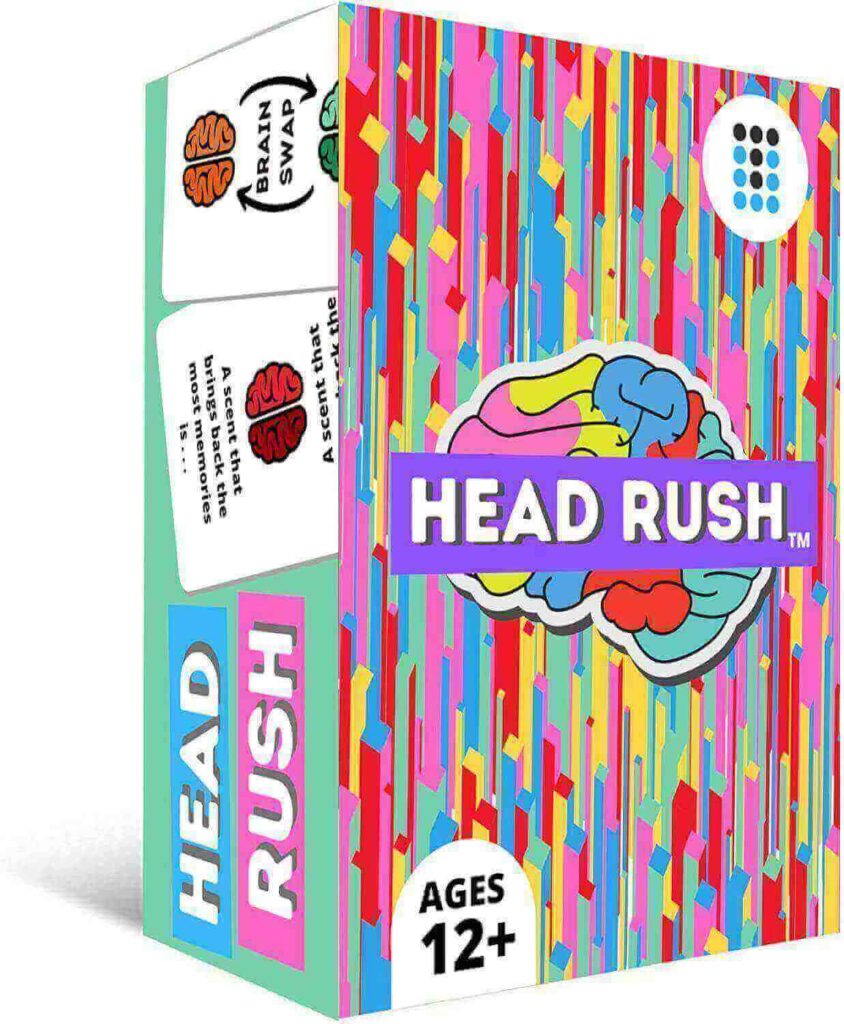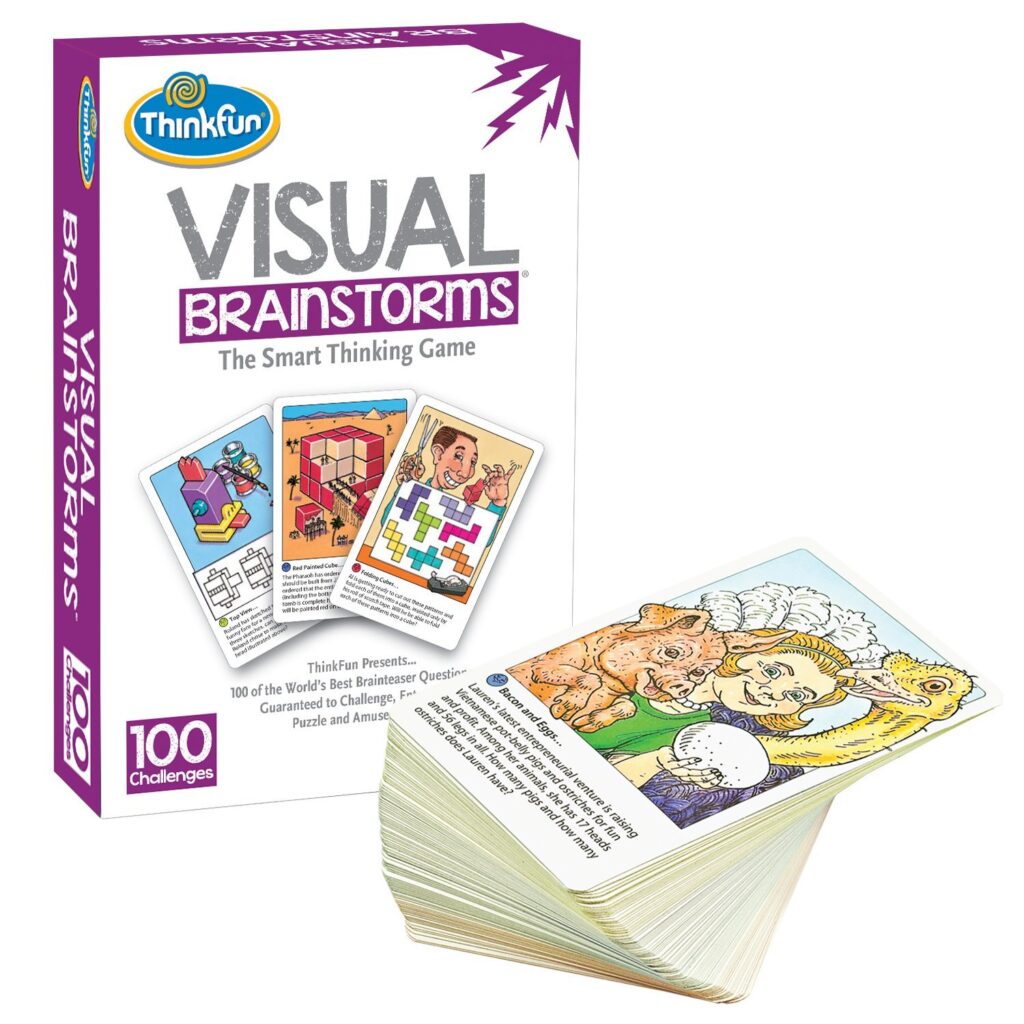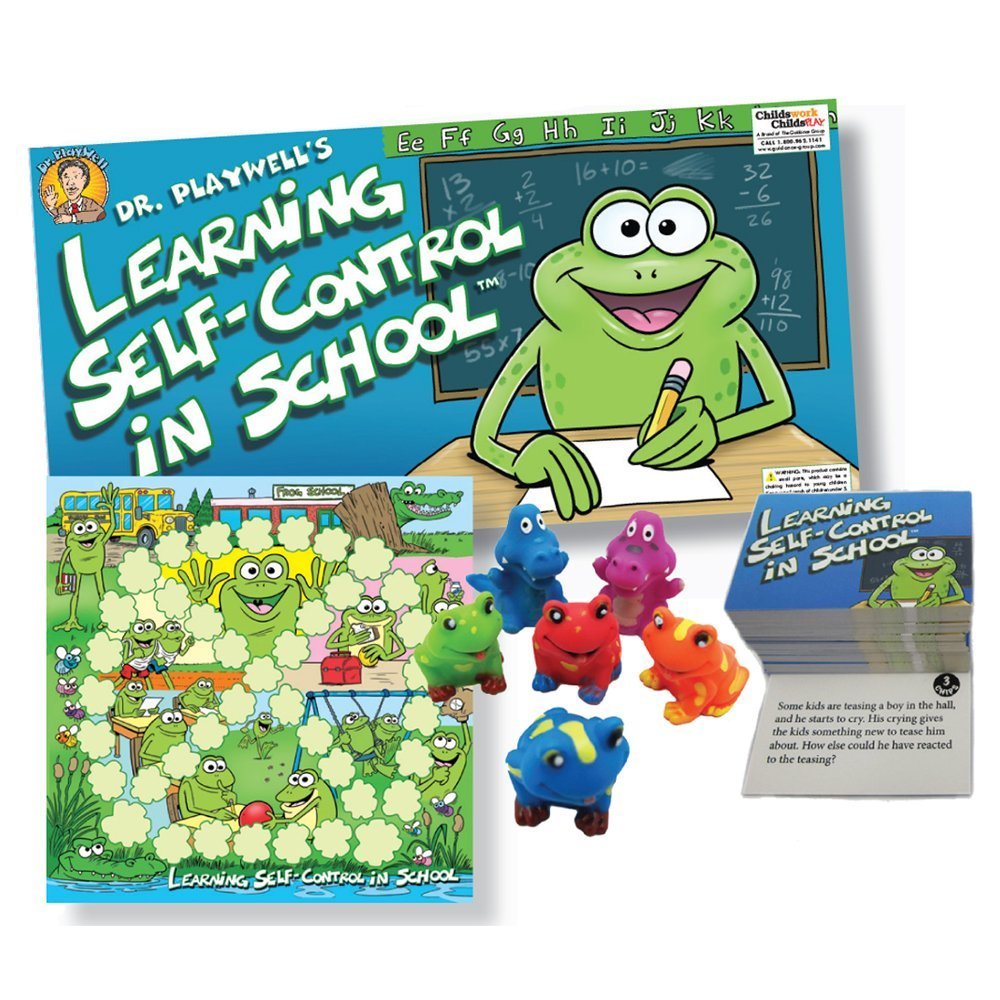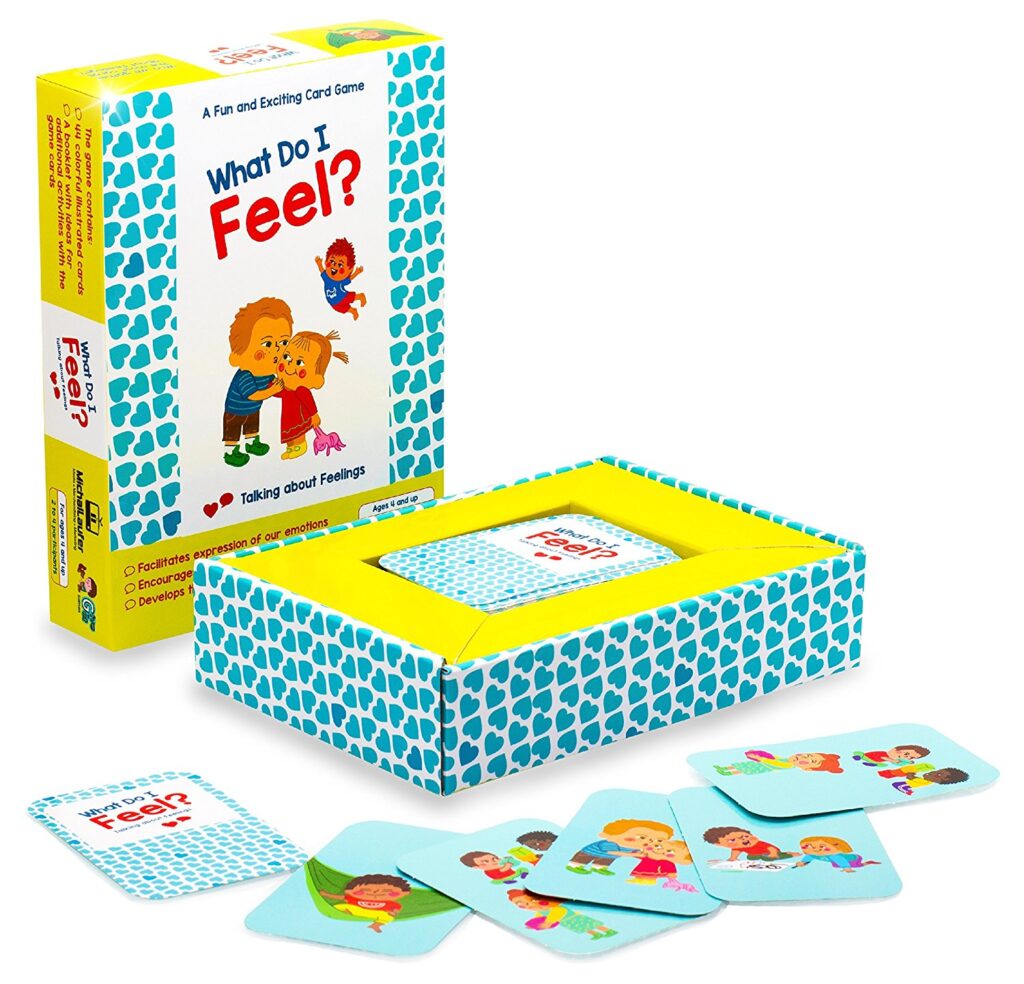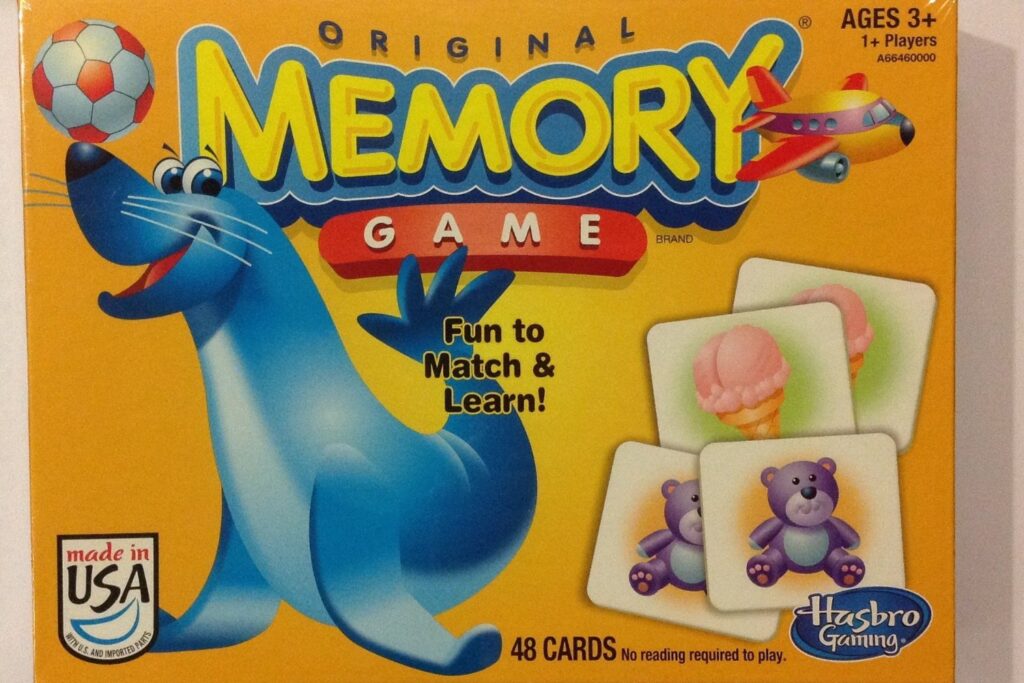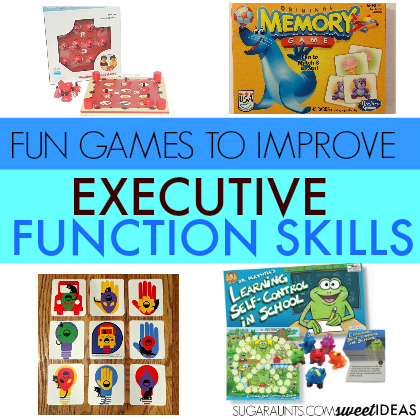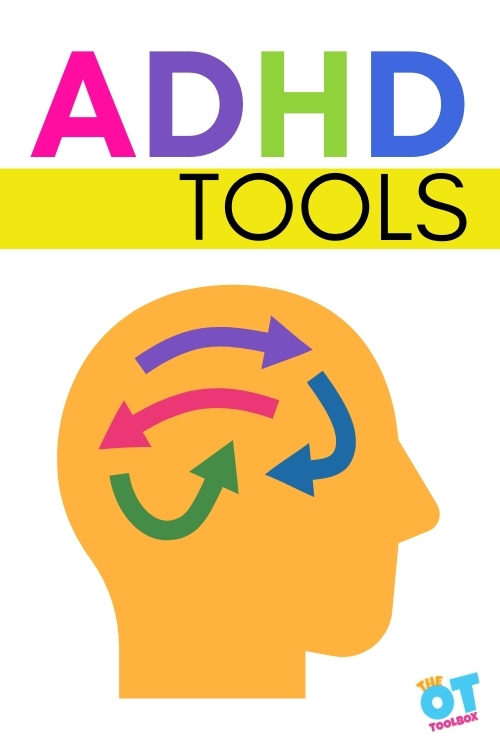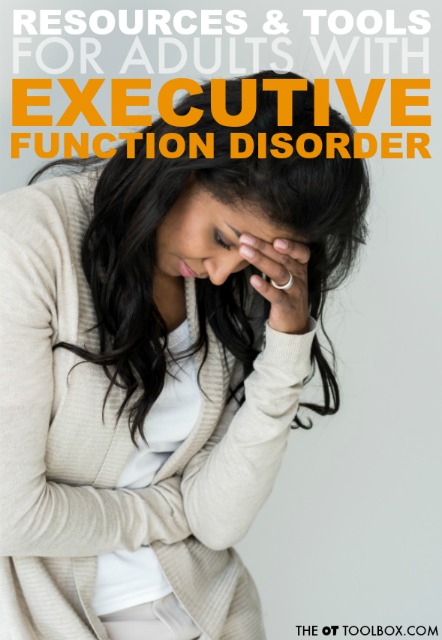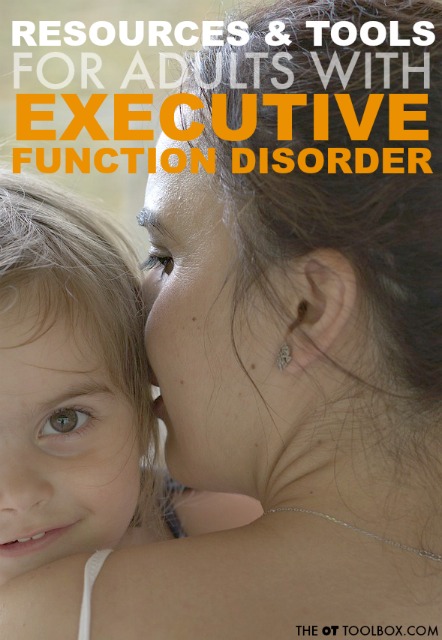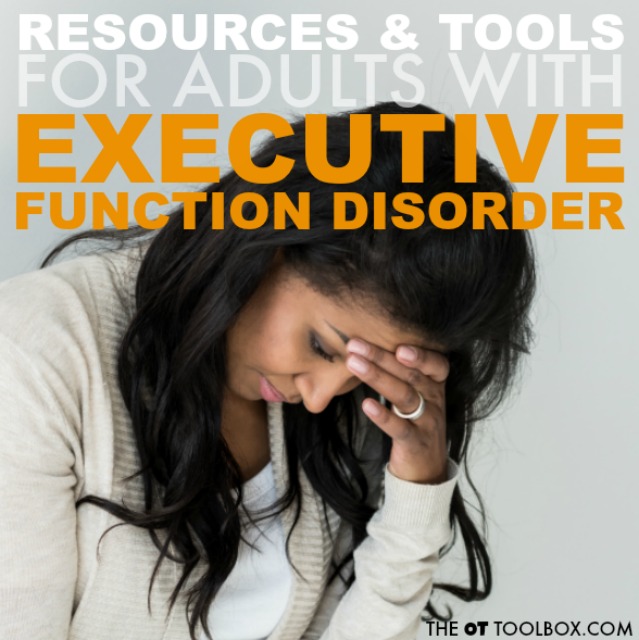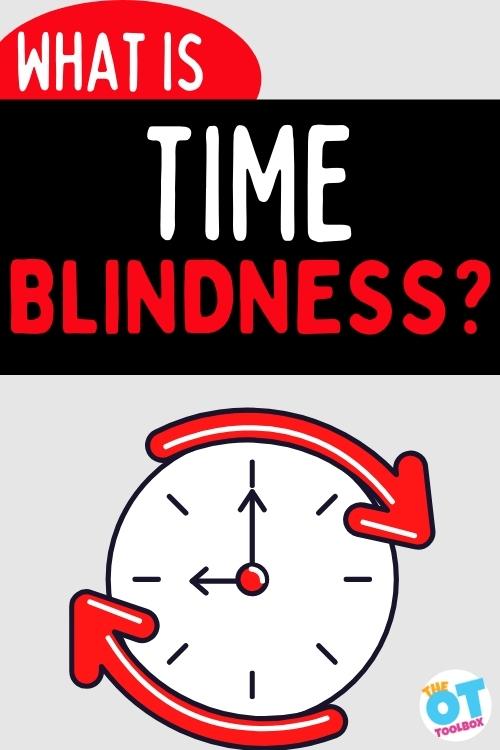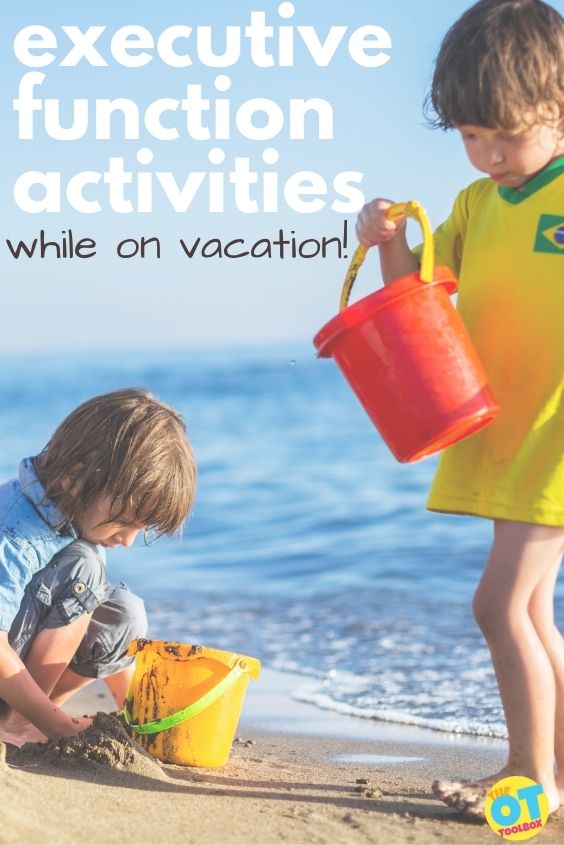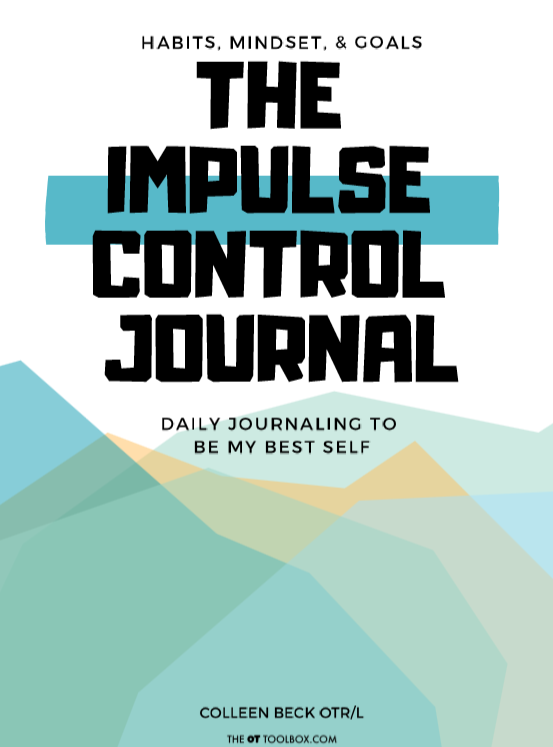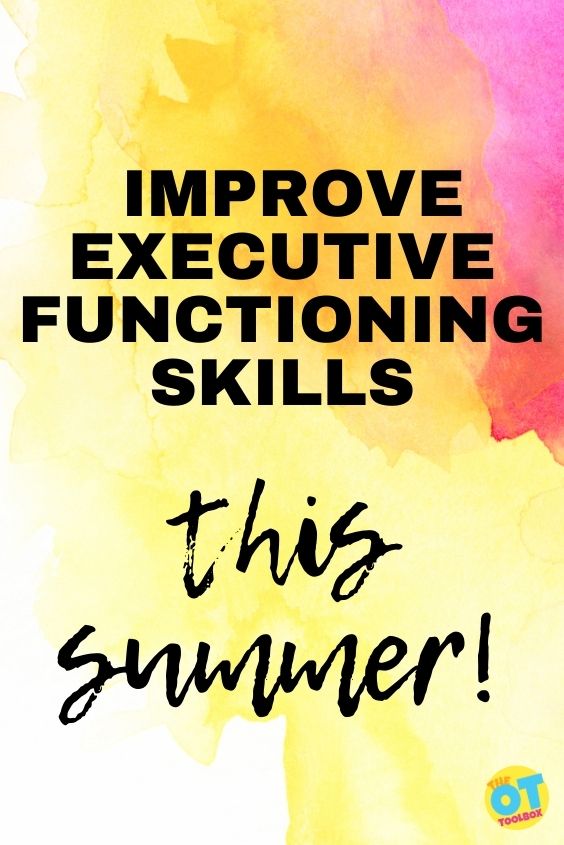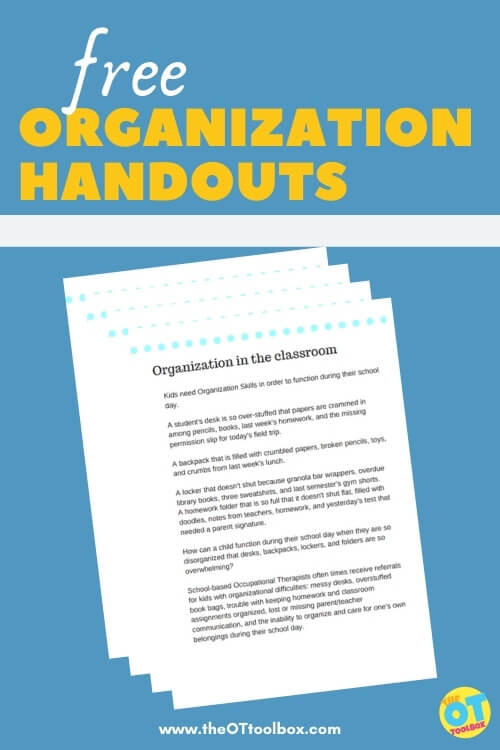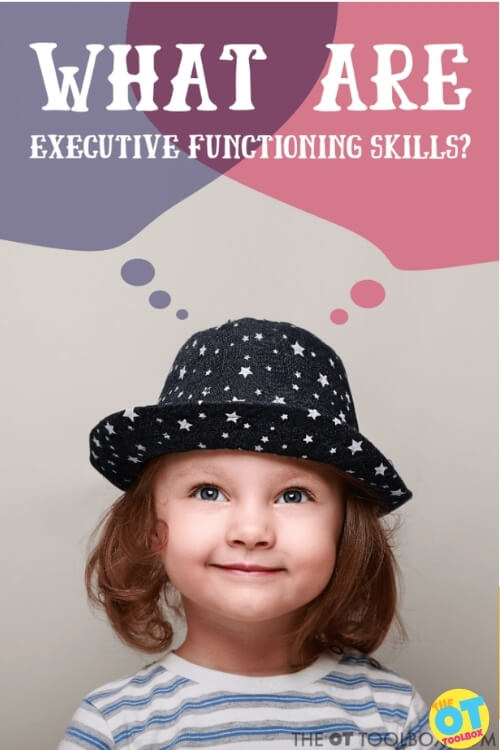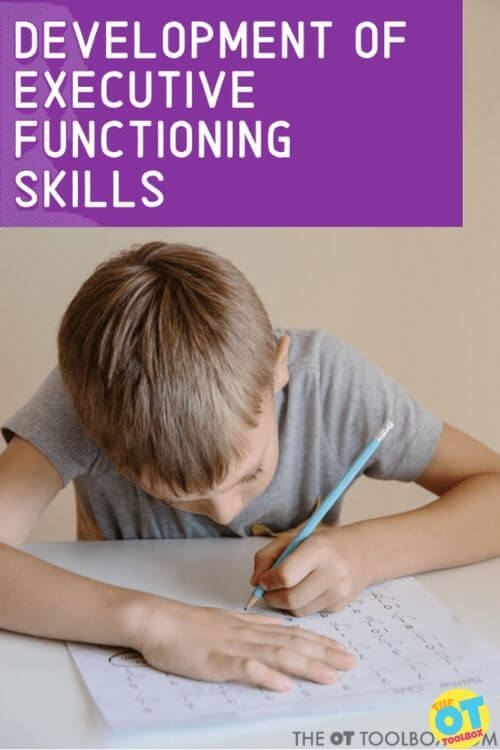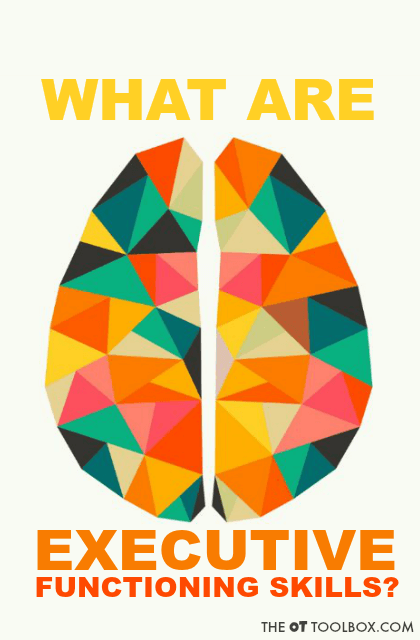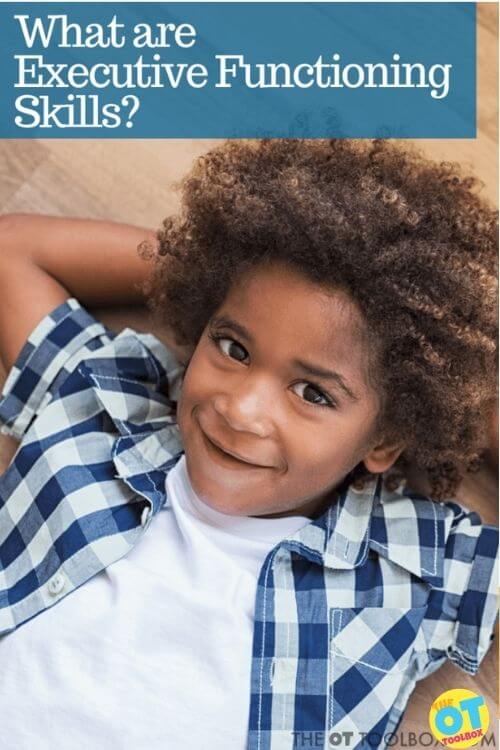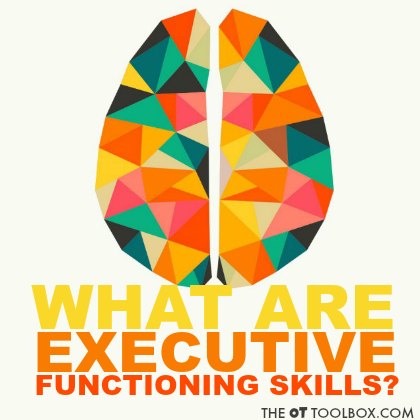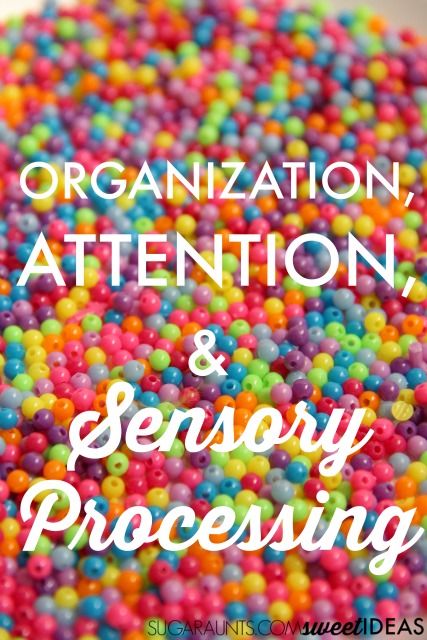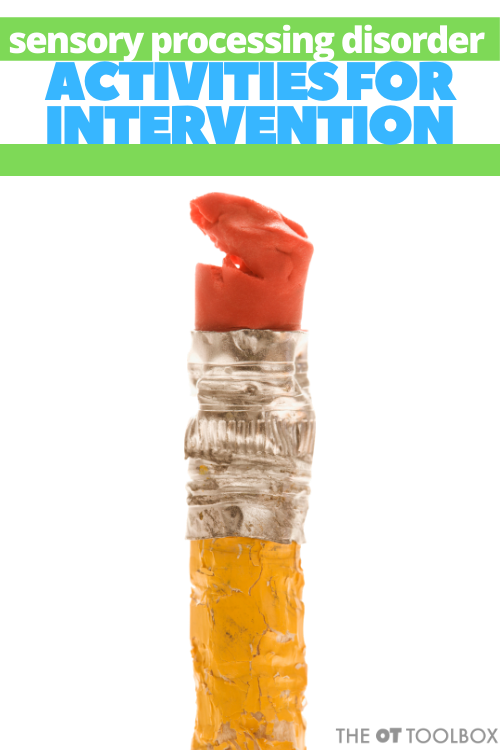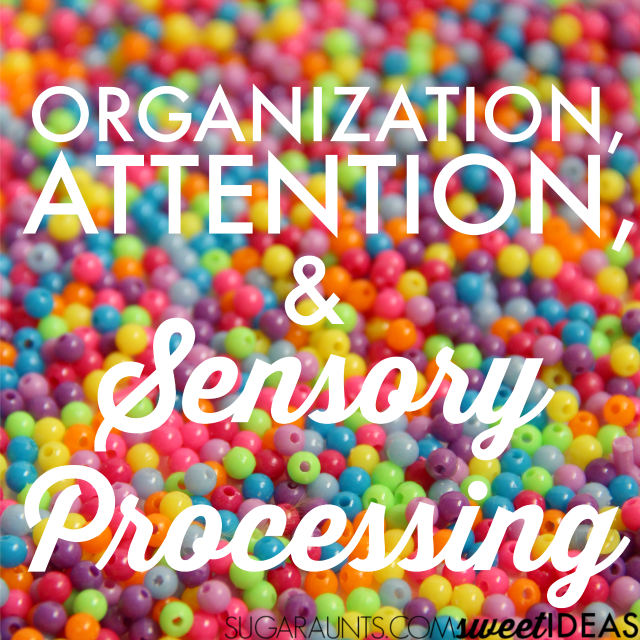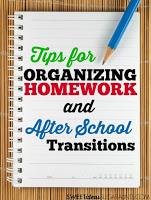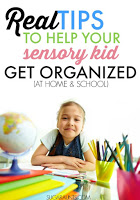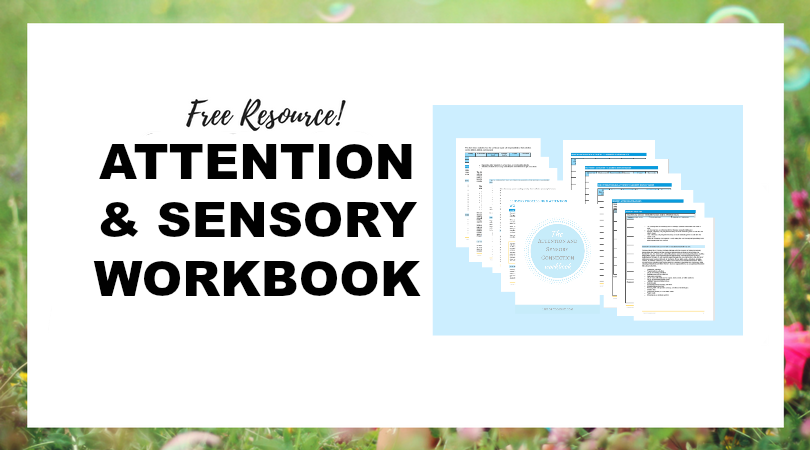This blog post oh how to help students become more organized at school was originally written on January 11, 2016 and was updated on April 9, 2024. We wanted to update it to include resources to help kids with a messy desk or disorganized locker that results in lost homework, misplaced assignments, and general school organization. A related post that can support these needs is the home aspect with our post on organization activities.
School Organization
Helping students get organized is key when it comes to executive functioning skills and school work and participating in education in the school setting. One way I like to explain this is by referring to school organization as a two part balance.
One side of the balance is the home aspect and the other side is the school aspect.
Executive functioning skills play a major role in homework! And, there is more to it than just doing a homework assignment. There is actually a school and a home aspect that involves EF skills like organization, attention, task completion, working memory, impulse control, and other skills. The thing is that development of these skills isn’t complete until 30 years of age, so having tools and strategies in place is key for each step.
At school there can be supports for each step:
- Writing down the assignment in an agenda
- Putting all of the needed materials into the backpack: books, tablet/device, papers, folders, etc.
- And then turning in the assignment when it is due: locating the assignments and other items
At home, there are several stages as well:
- Locating the homework assignment and all items in the backpack
- Doing the assignment completely according to the timeline and requirements
- Putting the completed assignment back into the backpack or folder along with other materials
Kids need Organization Skills in order to function during their school day.
A student’s desk is so over-stuffed that papers are crammed in among pencils, books, last week’s homework, and the missing permission slip for today’s field trip.
A backpack that is filled with crumbled papers, broken pencils, toys, and crumbs from last week’s lunch.
A locker that doesn’t shut because granola bar wrappers, overdue library books, three sweatshirts, and last semester’s gym shorts.
A homework folder that is so full that it doesn’t shut flat, filled with doodles, notes from teachers, homework, and yesterday’s test that needed a parent signature.
How can a child function during their school day when they are so disorganized that desks, backpacks, lockers, and folders are so overwhelming?
As an Occupational Therapist in the schools, I often times had referrals for kids with organizational difficulties: messy desks, overstuffed book bags, trouble with keeping homework and classroom assignments organized, lost or missing parent/teacher communication, and the ability to organize and care for one’s own belongings during their school day.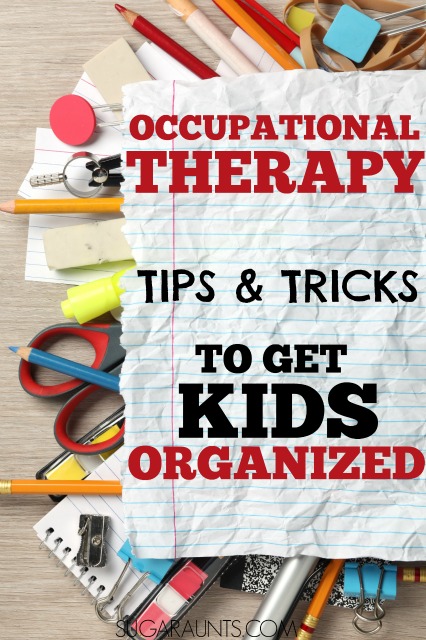
How to Help Kids Organize their School Work
There are many ways that a student can overcome disorganization and flourish in school with systems that work for them. As with any Occupational Therapy recommendation, ideas are individualized to meet the student’s needs. Every child is different in their strengths, abilities, and needs and what works to organize one student will not work with another. Today, I’m sharing tips and tools to help organize students so that they may learn in the classroom and school environment.
These sensory strategies for school based occupational therapists can be a big help in addressing the organizational needs of students.
What causes a student to become so disorganized that they cannot complete classroom requirements?
There are many diagnoses that have symptoms of disorganization. ADHD, Autism, and Learning Disabilities are just a few. Additionally, many students do not have a diagnosis and are disorganized in their school tasks.
There are so many causes of disorganization that describing contributing factors is a more efficient way to describe reasons why a student may be disorganized. Problems with attention, executive functioning, fine motor skills, and vision may contribute to disorganization, among many others:
Problem Areas leading to disorganization:
Studies show that individuals with a small or underdeveloped frontal lobe of the brain tend to have difficulties with organization, poor memory, emotional reactions, and they tend to become overwhelmed by simple tasks. These individuals will have trouble keeping themselves organized in tasks.
Often times, organization challenges are a result of difficulty with planning and prioritizing tasks. These problem areas may be contributing to a child’s disorganization in school:
- Attention difficulties
- Sensory issues
- Behavior
- Executive Functioning
- Visual Perceptual difficulties
- Visual Motor difficulties
- Cognitive deficits
- Fine motor problems
- Motor Planning issues
- Hyperactivity
- Distractibility
- Fidgeting
- Problem solving
- Memory issues
- Auditory processing problems
- Language processing problems
- Lack of motivation
- Poor impulse control
- Emotional instability
Executive Functioning and Organization difficulties
Executive functioning is needed to keep up with the growing to-do list of the school’s day. A child with executive function difficulties can’t see the first step they need to take in a project.
Taking home a daily planner, packing a backpack, arranging items in a desk, placing homework into the correct bin, all requires working memory, motivation, cognitive skills, focus, planning, and persistence. Difficulties in any of these areas will result in a breakdown of task completion.
So, how can a student with organization problems be helped so that they can complete assignments, function in their school day, and excel in learning?
Full disclosure: This post contains affiliate links.
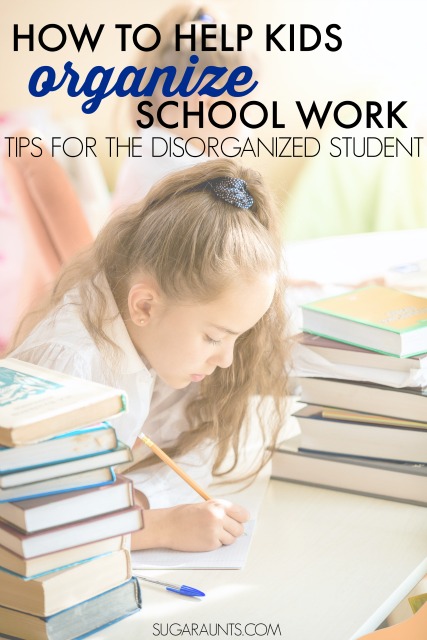
Organization Tips for Students
-
- Develop routines and stick to them. Morning routines can involve unpacking a backpack, planning homework into correct bins, putting away items needed for the day, sitting at the desk, and starting on morning work. Maintain a consistent routine. Develop routines for different parts of the student’s day. Social stories, picture schedules, story stones, and physical routing minders can help.
- Use a simple Schoolwork Folder system. Create a system for paperwork that needs to come back to school and what can stay at home. A simple 2 pocket folders
works best for this. Adding extra pages or parts to the folder creates too much visual input. Add a bright sticker to one pocket for “Keep at Home” and a bright sticker for the pocket to “Bring Back”. A plastic folder is more durable. Older students can use color coded folders for each subject. - Clear document folders
in different colors can be used to coordinate with each subject’s color.
- Create a checklist to help students stay organized.
- Use checklists. Make checklists that the student can mark off tasks as they are completed. Using a checklist is a great way to incorporate handwriting skills into the routine. Marking a check mark or “x” in a small box allows for precision of motor movements.
- Homework assignments should be written in the same place on the blackboard each day.
- Allow time at the beginning of the class or day instead of at the end to write down that day’s homework.
- Teachers can sign off in an assignment book after the student writes down the day’s homework. Provide a space for parent sign-off after homework has been completed.
- Parents can be provided with a small list of students in the class that can help with homework assignment questions. These students or parents can be called if there are questions about assignments.
- Mailed homework. The parents would need to provide a self-addressed, stamped envelope and the teacher can mail the next few week’s homework assignments.
- Use a monthly calendar to keep track of long-term assignments and weekly classes like gym or library.
- Break long term projects into smaller tasks with deadlines.
- Email parent permission slips.
- Breakdown worksheets by folding the paper into sections that can be completed before moving on to the next section.
- Provide concise and concrete directions.
- Turn in completed assignments immediately and provide a space for completed work with clear label. A bin, file, or tray works nicely for this.
- Mark pages in a book or workbook with a paperclip so that the student can turn to the correct page more easily and quickly.
- Use a digital clock in the classroom or timers for competing tasks.
- Provide a small movement break between tasks.
- Allow for self-monitoring of systems.
- Provide tools for fidgeting.
- Try using an Impulse Control Journal.
Organization Tips for the locker
Another aspect is a messy locker. You’ve probably seen the locker stuffed full of papers from the beginning of the school year. How can the student find a homework assignment in that mess of old papers, torn folders, dirty gym clothes…
These organization strategies can help keep the locker organized:
- Create a container system for lockers. Use one container for hat, gloves, scarf, and one container for books. The container can be emptied into the backpack at the end of the day. Add pictures to the locker for a visual cue for where the coat, lunchbox, and backpack should hang. Add shelves if needed.
- Picture Symbols. A visual cue is a great way to break down tasks. Create a series of pictures for desk morning tasks, lunch tasks, or end-of-the-day tasks. Pictures can be printed off in a strip and the strips replaced as the day goes by.
- Use a second set of textbooks at home to eliminate the need to bring books back and forth between school and home.
- Place a checklist of what needs to be brought home each day in the locker or in the desk.
How to help students keep their desk organized
A huge aspect of disorganization for students is the desk. It becomes a catch all that is stuffed with papers. Did you ever experience a teacher that dumped a student’s desk over in anger? Unfortunately, my daughter’s second grade teacher did just that for students in her classroom. Then, the student had to miss recess in order to clean up the mess. While the desk was very disorganized and the students couldn’t find their missing assignments or books, it is a really cruel way to teach organization skills. This aspect of executive functioning actually doesn’t develop for many years, so experiencing this kind of treatment in front of a whole classroom of peers probably isn’t the best way to teach skills…
Here are some actionable and practical ways to help students keep their desk tidy and organized (without needing to dump the desk in the middle of class):
- Eliminate dropping of the pencil. Students with organizational problems often times have difficulty with fidgeting, sensory issues, fine motor skills, attention…(all of the items described in the list above!) Dropping the pencil can create a break in attention that allows for further disorganization. Tie the pencil to the desk to prevent dropping: Tie a string to the eraser end of the pencil and tie the end of the string to a suction cup. Attach the suction cup to the desk surface.
- Reward systems. Set up an incentive or reward system for appropriate organization of folders, backpack, locker, or homework completion. These can be tailored to the student’s interests.
- Color code notebooks, folders, book covers, and workbooks. Books and notebooks can use prefabricated book covers or you can use colored paper to create book covers in a variety of colors. Add a small colored dot on homework assignments that correspond with the color of the subject’s book. Use markers or small stickers
to color code homework. - Use a zippered pouch
for pencils, erasers, calculators, etc in the backpack. This will reduce the items “floating around” in the backpack.
- Develop a written contract of organization tasks with the student, teacher, and parent, along with choices for the student.
- Clear plastic, gallon-sized bags in the backpack to hold items like gloves, gym clothes, etc.
- Reduce distractions in the classroom to prevent distractibility: place desk away from windows, doors, and the pencil sharpener.
- Use a classroom peer as an organizing mentor.
- Provide a daily class checklist.
- Help the student clear their desk of all items except the items they should be using. Work on getting the student to be independent in this task by using visual and verbal cues. Provide a 10 second “Clear Off” time before starting a new task to allow time for the student to clear his work space.
- Mark off spaces inside the desk for items like books and pencil box using masking tape. The items should be “parked” in their correct space unless they are being used.
- Provide a low cardboard box inside desks with compartments for organizing supplies.
- Provide a clear plastic bin
or shelf for the student’s items instead of using a desk or locker.
- Use a triangular pencil grip
to keep pencils from rolling off desks.
- Provide velcro for students to attach their pencil to the desk surface or inside the desk.
- Try an eraser ring to prevent losing large erasers inside desks.
- Use a Kneadable Eraser
. It can be stuck inside the desk when not in use and makes a great fidget toy.
- Conduct daily, weekly, and monthly clean-ups of desk, locker, and backpack.
- At the end of the day, help the student prepare his work space for the next day.
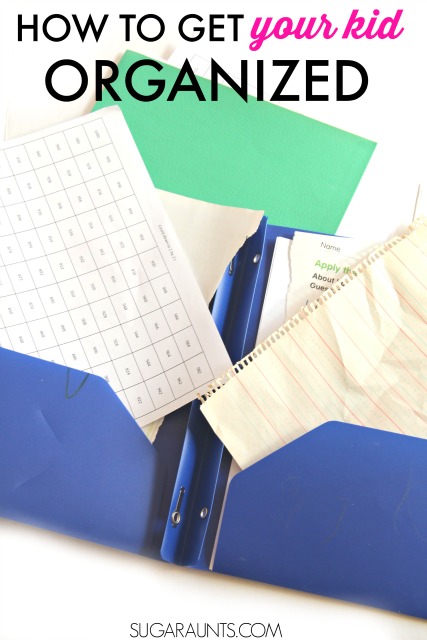
How to Help Organize Kids Schoolwork
Organizing challenges are difficulties with prioritizing and planning. It is difficult for some students to breakdown a multi-step assignment into manageable steps.
Try using the tips above for organizing in the classroom. It can take a period of monitoring along with trial and error to establish an appropriate organizational system that works for your student of child.
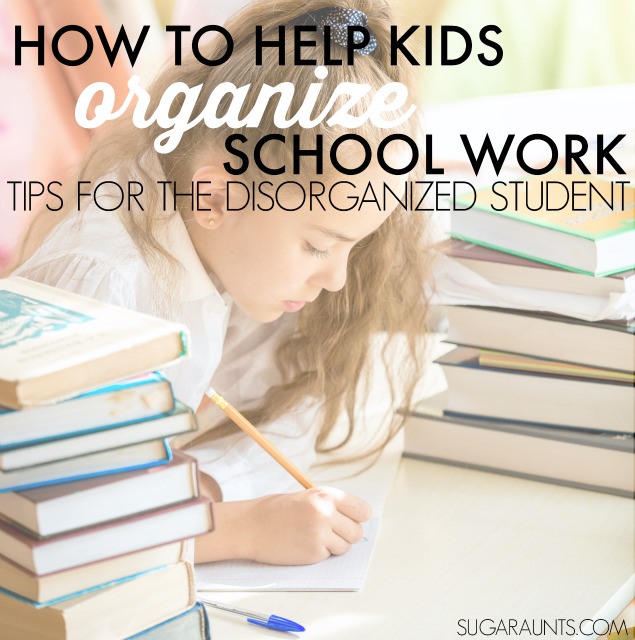
This is our first post in a new series on organization for kids. I’ll be sharing a few other ways to help kids become organized so that they can function in daily tasks. Stay tuned for more tips to help organize themselves.

Colleen Beck, OTR/L has been an occupational therapist since 2000, working in school-based, hand therapy, outpatient peds, EI, and SNF. Colleen created The OT Toolbox to inspire therapists, teachers, and parents with easy and fun tools to help children thrive. Read her story about going from an OT making $3/hour (after paying for kids’ childcare) to a full-time OT resource creator for millions of readers. Want to collaborate? Send an email to contact@theottoolbox.com.


